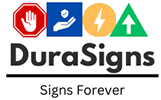Safety signage is a critical aspect of workplace safety and compliance. Properly designed and placed safety signs not only help prevent accidents but also ensure that businesses adhere to legal regulations and standards. In this article, we will delve into the importance of safety signage compliance, the key regulations and standards to be aware of, and best practices for ensuring your safety signs meet these requirements.
1. The Importance of Compliance
Compliance with safety signage regulations is essential for several reasons:
- Legal Requirements: Most countries have specific laws and regulations that mandate the use of safety signage in workplaces. Non-compliance can result in fines, legal actions, and reputational damage.
- Employee Safety: Proper safety signage helps protect employees by providing clear instructions and warnings about potential hazards. This reduces the risk of accidents and injuries.
- Operational Efficiency: Clear and compliant safety signage helps streamline operations by guiding employees and visitors, ensuring they follow the correct procedures and pathways.
2. Key Regulations and Standards
Several organizations and agencies provide regulations and standards for safety signage. Some of the most important ones include:
- OSHA (Occupational Safety and Health Administration): In the United States, OSHA sets forth regulations for workplace safety, including safety signage. OSHA standards (29 CFR 1910.145) specify the design, placement, and use of safety signs and symbols.
- ANSI (American National Standards Institute): ANSI provides guidelines for the design and use of safety signs and colors (ANSI Z535 series). These standards cover aspects such as signal words, colors, symbols, and text size.
- ISO (International Organization for Standardization): ISO provides international standards for safety signage (ISO 7010). These standards focus on the use of standardized symbols and pictograms to convey safety messages across different languages and cultures.
- Local Regulations: Many countries and regions have their own specific regulations for safety signage. It’s important to be aware of and comply with these local laws in addition to international standards.
3. Best Practices for Ensuring Compliance
To ensure your safety signs meet the necessary regulations and standards, follow these best practices:
- Understand the Requirements: Familiarize yourself with the relevant regulations and standards that apply to your industry and location. This includes both national and international guidelines.
- Use Standardized Symbols and Colors: Adhere to standardized symbols and colors as specified by ANSI, ISO, or other relevant standards. This ensures that your safety signs are universally recognizable and understood.
- Regular Inspections: Conduct regular inspections of your safety signage to ensure they are in good condition, clearly visible, and free from obstructions. Replace or repair any damaged or faded signs.
- Proper Placement: Ensure that safety signs are placed in strategic locations where they are easily visible and relevant to the hazards they address. This includes entrances, exits, hazardous areas, and equipment zones.
- Employee Training: Provide training to employees on the meaning and importance of safety signage. Ensure they understand the symbols, colors, and instructions conveyed by the signs.
- Stay Updated: Keep abreast of any changes or updates to safety signage regulations and standards. Implement any necessary adjustments to your signage to remain compliant.
Conclusion
Ensuring compliance with safety signage regulations and standards is crucial for maintaining a safe and legally compliant workplace. By understanding the key regulations, using standardized symbols and colors, and following best practices for placement and maintenance, you can effectively communicate safety information and protect your employees. Investing in compliant safety signage is not only a legal requirement but also a proactive step toward creating a safer work environment.

